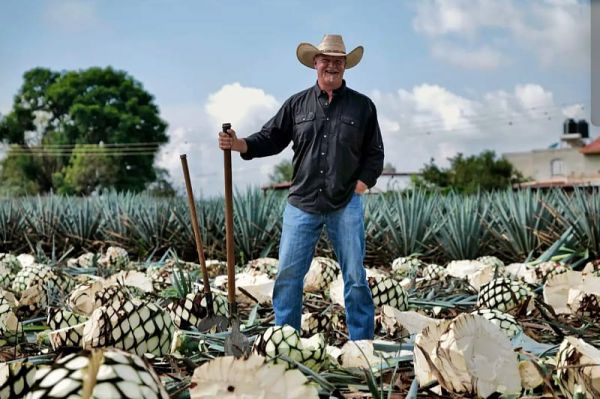Log in to your account
Lost password?Distribution
8 Ways Importers and Distributors Can Find Quality Leads for New Accounts
Every wine and spirits salesperson “in the street” knows that maintaining a vibrant, healthy account run involves a periodic process of weeding out and replacing “dead wood” accounts that have not generated sales for a prolonged period.
05/02/2017

You’ve reached that point at month’s end when you’ve reviewed sales results and you’ve found some accounts that have not performed well. You’ve met with them a few times and you may have thought you saw an indication that things were moving in a good direction to do business. For whatever reasons, it hasn’t happened. It’s time to find fresh accounts that will help your monthly sales numbers. What’s the most effective way to find replacements? Where are the best places to go fishing?
1. Check Out Websites and Social Media and Sign Up for Online Content From Target Accounts
Subscribe to all the newsletters, blogs and print publications that your target accounts distribute. This content contains a wealth of information about the type and category of the wines and spirits that the restaurant or retailer sells. Take note of the editorial tone and subject matter in blogs. There’s always an autobiographical angle indicating preferences, values and “sweet spots.” A hot mixologist may post often about new herbs or spices they’re using in cocktail recipes. Most restaurants have updated wine lists on their websites. Don’t forget to subscribe to an account’s FB or Instagram page.
2. Review Web Content About Target Accounts
Many regional and local markets have hospitality news and “foodie” websites like Eater or Time Out. Keep up on openings, re-locations and closings. Articles on restaurants and retailers contain enough hard information about the owners and philosophies to help you prepare a profile that will inform your product selections when you get an opportunity for a meeting. Reviews of restaurant and shops written by food and wine critics contain useful clues about a chef’s menu or a store’s focus, which can point to potential wine and spirits choices to show the account.
3. Read Customer Reviews on Websites
Read restaurant reviews by customers on OpenTable, Yelp, MenuPages, TripAdvisor and similar websites. Yelp and other sites also have reviews of retailers. Facebook and other social media outlets also provide customers a powerful forum on which to communicate their experiences. Granted, not every customer review deserves the same level of credibility, but never underestimate the opportunity to learn customer opinions. These often contain details that can mean a good opportunity for you to sell. Comments about selections, prices can give you good ideas for areas to attack.
4. “Best Of..” Lists From Wine and Spirit Print and Web Publications
Every year, renowned publications like Wine Spectator, Wine & Spirits, The World of Fine Wine, Eater and others will devote a special issue to awards and/or restaurant surveys. Broken down by region and city, these lists can contain good leads, especially for restaurants or retailers that have “flown under the radar” and for accounts in secondary markets.
5. Get Out In the Street and Observe
As anyone who has ever looked for a new apartment or a new house can attest, spending time in a neighborhood can reveal a lot about the dynamics of an area. If you want to target a new area or neighborhood, make a plan to visit during lunch or before dinner. Is a train or bus station close? Are your target restaurants or retailers located near areas with high foot traffic? Can you discern a pattern of store visits if your target is in a shopping plaza or mall? Does the store have a whiteboard or signage advertising tastings? Have a drink and a small bite at the bar. What is the crowd like? Is it young/urban, family-oriented or both? Obviously, look out for plywood partitions and other overt signals of on-going construction.
6. Talk to Your Colleagues and Competitors
Even in major markets, the wine trade is a small community. You can often find salespeople from scores of distributors and importers at large portfolio tastings or at events sponsored by trade organizations. Don’t waste the opportunity to network and exchange information. Even salespeople that work for competitors will help each other out if they don’t have to give up a sale. Sometimes, a colleague or competitor will fail to connect well with an account purely because of personality. This can be an opportunity for you.
7. Find Out Where Buyers for Target Accounts Hang Out
In many urban and suburban markets, restaurants have corkage-free nights, usually slow days during the early part of the week. Invariably, these BYOB nights attract a large crowd of wine buyers, beverage directors, wine managers, and sommeliers. Each city has places known as chef’s hangouts, where chefs go after closing to grab a bite, a beer and blow off steam. Similarly, many markets have wine bars and bistros known to attract a regular crowd of trade buyers. Seek these places out. Many trade people in a given area know about them. Make yourself a familiar face. Even if you adopt a low-key approach to selling at the outset, you will have gained an edge.
8. Keep Your Ear to the Ground and Your Contact List Fresh
As time passes, it’s all too easy to lose track of people, especially in the wine and spirits trade in a busy market. In fact, there is an annoyingly constant churn or turnover of people in the trade, especially among restaurants and retailers. As a matter of course, your favorite manager or buyer may get another position next week. If you’re lucky, you have a strong relationship and that person will give you a heads up that will let you continue to sell to that person at their new gig, but you’ll have to begin the process again with that account’s new buyer. Be sure to contact your buyers and accounts regularly. Stay in touch with all the people you know, who collectively form an invaluable resource. A visit or phone call are always better than an e-mail message or FB post, but your accounts will tell you what they prefer. Consistent communication with accounts is critical.
You’ve reached that point at month’s end when you’ve reviewed sales results and you’ve found some accounts that have not performed well. You’ve met with them a few times and you may have thought you saw an indication that things were moving in a good direction to do business. For whatever reasons, it hasn’t happened. Every wine and spirits salesperson “in the street” knows that maintaining a vibrant, healthy account run involves a periodic process of weeding out and replacing “dead wood” accounts that have not generated sales for a prolonged period. It’s time to find fresh accounts that will help your monthly sales numbers. What’s the most effective way to find replacements? Where are the best places to go fishing?
















